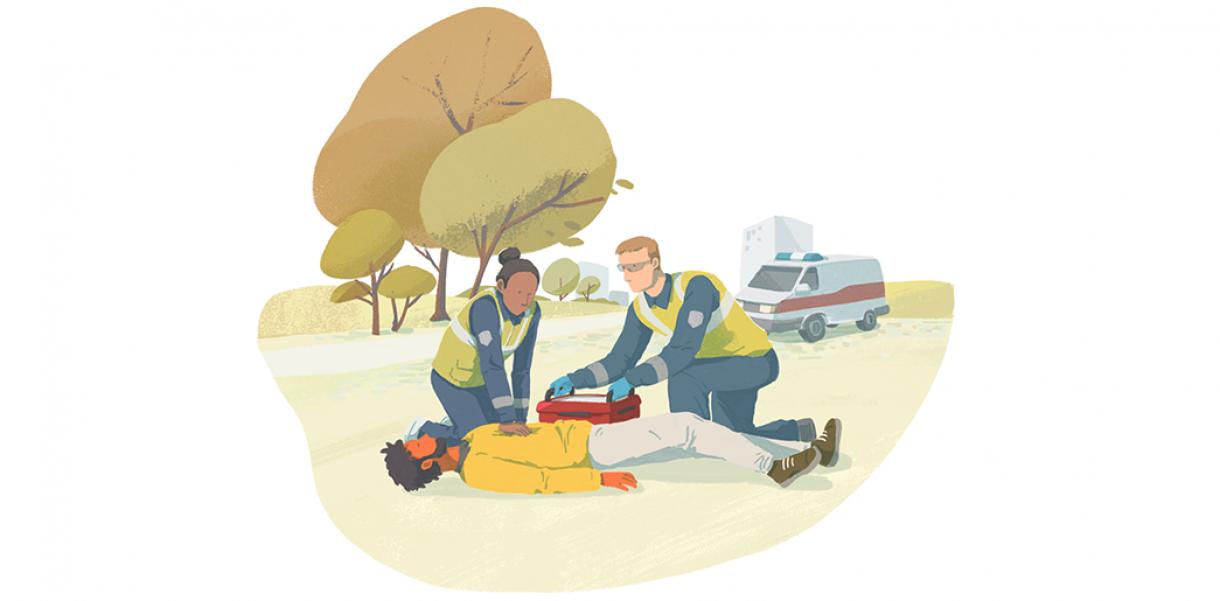"I'm happy; I don't have to build a crane". The statement comes from my 17-year-old daughter, from the back seat of our car. It's autumn, and we're on our way to Helsingborg in Sweden on holiday. We pass a construction site, where an in-progress office complex is materialising by the waterfront. At this moment, nothing could be more distant from this poetic soul than having to build a crane. Fair enough.
But I'm quiet for a while. I wish for my daughter and all youth that they'll continue to believe they can do anything they set out to do. In that spirit, I continue the conversation. Where it ends, you'll know by the end of this article.
I could have answered her in a lot of ways. "No, it's great that you, as a high school student, do not have to build a crane." Or I could say, “why not? If you had to, what would you do?” That's where it starts to get interesting. How do you do something, you have no qualifications for?
Let's look at actually building the crane. You start by clarifying the task, examining the terms, needs, application, budget, schedule, etc. You uncover the overall terms. What is it used for? What should it be able to do? Should it be able to be moved? How long is it expected to last? What should it be able to lift? Should it be able to turn? Should it be able to be handled from a crane chair or remotely controlled? Who should be able to use it? The questions continue.
"I wish for my daughter and all youth that they continue to believe they can do anything they set out to do."
And a crane is not built by an individual. There's a team of competencies to be brought together—specific professional engineers. Experts to be contacted and involved. You plan meetings with the task provider and future users to clarify. You define the task and prepare project plans and descriptions for the process. You test parts of the solutions, discover the potential of the existing.
And one day, after battles, successes, bumps in the road, impossible suppliers, theft from the construction site, lost documents and huge fighting spirit — there's a crane! Hopefully on time. Hopefully, within the budget. Hopefully, with everyone involved happy and satisfied. Perhaps in this process, you've gained experience that makes it possible to build the crane faster, cheaper and better next time. Maybe you even find out that your life purpose from now on is to build cranes. You go into that business. Become an expert. Mentor other crane builders…
The point of all of this is that if you tackle a seemingly impossible challenge, like any other classic design task and initiate a good design process, then you can actually solve pretty much anything.
And we have many "cranes" to build in a figurative sense. Newsfeeds overwhelm us daily with tasks we must solve together: environmental challenges, resource scarcity, poverty, drought and floods and a very current pandemic challenge. And yes, they can seem unmanageable. And yes, you'll be tempted to think "well, it's not me who has to solve it". But we must reformulate the question to "what does it take for us to solve it?"
"The great challenge of our time is to balance growth in welfare for the many, without overloading our planet."
Most often it's a matter of will, courage, trust and money. Willingness to make an effort. Courage to make the decision. Confidence that we can solve it together. Money to fund hours, processes, materials, everything it takes to make a real difference.
An hour and a good conversation later, my daughter and I dreamed of being allowed to build cranes. My husband said he considered building one from the box of white Lego we haven't opened since Christmas. The one in the closet with the mousetraps and heating blankets. He, however, retracted when my daughter indulgently explained to him that the crane was only a metaphor.
If you are going to build a crane, remember to consider whether we need that crane at all? What is the consequence of building it? Is there an existing crane in advance that could solve the task? And when the crane is finished being a crane, what can we convert it to?
The great challenge of our time is to balance growth in welfare for the many, without overloading our planet. That is the primary task of the designer and in interaction with the new generations. I hope they never lose faith that what they do matter, and that they can do pretty much anything they set out to do, even from the backseat of the car.
Image: Moheb Anwari




